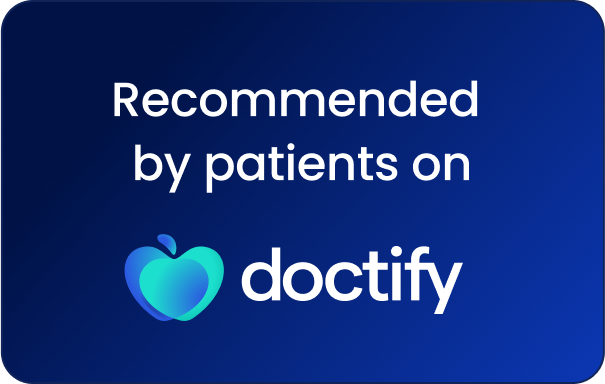Abdominal and groin hernias are common conditions that can cause significant discomfort and complications if left untreated. A hernia occurs when an organ or tissue pushes through a weak spot in the abdominal muscles. This can lead to noticeable bulges and often pain, especially when coughing, bending over, or lifting heavy objects. Understanding the different types of hernias and the available treatment options is crucial for managing this condition effectively.
Understanding Abdominal and Groin Hernias
Abdominal and groin hernias occur when an organ or tissue bulges through a weak spot in the muscle or surrounding tissue wall. The most common types of hernias include inguinal, umbilical, hiatal, and incisional hernias. Inguinal hernias happen in the groin area and are more common in men, where a portion of the intestine or bladder protrudes through the abdominal wall. Umbilical hernias occur near the belly button and are often seen in infants but can also affect adults. Hiatal hernias involve part of the stomach pushing up through the diaphragm into the chest cavity, causing symptoms like heartburn and acid reflux. Incisional hernias can develop at the site of a previous surgical incision.
The causes of hernias can vary, but they generally involve a combination of muscle weakness and strain. Factors that increase the risk include heavy lifting, persistent coughing, obesity, and aging. Symptoms of hernias include a noticeable bulge, pain or discomfort, especially when bending over or lifting, and a burning or aching sensation at the site. It’s important to seek medical advice if you notice any of these symptoms, as early diagnosis and treatment can prevent complications such as strangulation, where the herniated tissue’s blood supply is cut off.
Non-Surgical Treatment Options for Hernias
While surgery is often the most definitive way to treat hernias, there are non-surgical options that can be considered for mild cases or when surgery isn’t immediately necessary. These treatments focus on managing symptoms and preventing the hernia from worsening.
- Lifestyle Changes: Modifying your daily activities can reduce symptoms and prevent the hernia from getting worse. This includes avoiding heavy lifting, maintaining a healthy weight, and eating a high-fibre diet to prevent constipation, which can cause straining.
- Hernia Belts or Trusses: These are supportive undergarments designed to keep the hernia in place and reduce discomfort. They don’t treat the hernia but can provide temporary relief, especially during physical activity.
- Medications: For hernias causing acid reflux or heartburn, such as hiatal hernias, medications like antacids, H2-receptor blockers, and proton pump inhibitors can help manage symptoms.
- Physical Therapy: Strengthening the muscles around the hernia can sometimes help manage pain and discomfort. A physical therapist can guide you on specific exercises that may be beneficial.
While these non-surgical treatments can help manage a hernia, it’s essential to monitor the condition regularly. Non-surgical methods don’t repair the hernia, and surgery may be necessary if symptoms worsen or complications arise. Always consult with a healthcare professional to determine the best treatment approach for your specific condition.
Surgical Treatments: What to Expect
When non-surgical methods are insufficient, or the hernia poses a risk of complications like strangulation, surgery becomes the preferred option. The type of surgery recommended depends on the size and location of the hernia, as well as the patient’s overall health. The most common surgical treatments for hernias are open surgery and laparoscopic surgery.
In open surgery, the surgeon makes a large incision near the hernia to push the protruding tissue back into place and repair the weakened muscle area. This method might involve using a synthetic mesh to strengthen the affected area and prevent recurrence. Open surgery typically requires a longer recovery time but may be necessary for larger or more complicated hernias.
Laparoscopic surgery is a minimally invasive alternative, involving several small incisions instead of one large one. A laparoscope, a thin tube with a camera, is inserted through one incision, allowing the surgeon to view the hernia and perform the repair using specialised instruments through the other incisions. This method generally offers a faster recovery, less postoperative pain, and smaller scars compared to open surgery. However, not all hernias are suitable for laparoscopic surgery, so the best approach should be determined in consultation with your surgeon.
Post-Treatment Care and Recovery for Hernias
Recovery from hernia surgery varies depending on the type of surgery performed and the individual’s overall health. However, some general guidelines can help ensure a smooth recovery process.
- Follow Post-Op Instructions: It’s crucial to adhere to all postoperative instructions provided by your surgeon. This includes taking prescribed medications, caring for the surgical site, and attending follow-up appointments.
- Manage Pain and Discomfort: Mild to moderate pain is typical after hernia surgery. Over-the-counter pain relievers, ice packs, and rest can help manage discomfort. Avoiding strenuous activities and heavy lifting for several weeks is essential to prevent complications.
- Gradual Return to Activity: Light activities, such as walking, can promote circulation and aid in the healing process. However, gradually reintroduce more strenuous activities as advised by your healthcare provider.
- Watch for Complications: Be vigilant for signs of complications, such as increased pain, swelling, redness at the incision site, or fever. Contact your surgeon immediately if you experience any of these symptoms.
- Healthy Lifestyle Choices: Maintaining a healthy weight, quitting smoking, and eating a high-fibre diet can support recovery and prevent the recurrence of hernias.
Conclusion
Understanding and effectively managing hernias is crucial for your overall well-being. While non-surgical options can provide temporary relief, surgical treatments are often necessary for a complete and long-term solution. Whether you undergo open surgery or opt for a minimally invasive laparoscopic procedure, following your surgeon’s guidance and taking care of yourself post-surgery are vital steps in ensuring a successful recovery.
By staying informed about your treatment options and knowing what to expect, you can make the best decisions for your health. Regular check-ups and a healthy lifestyle can help you avoid future hernias-related complications.
If you or a loved one is dealing with a hernia, Precision Upper GI Surgery in Sydney, NSW, offers expert care and tailored treatment plans to meet your needs. Contact our friendly team today to schedule a consultation and take the first step towards effective hernia management and recovery.



